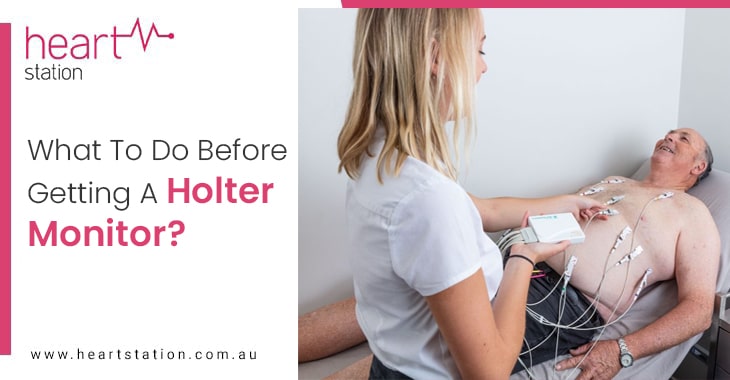A Holter Monitor is an important medical tool used to track the electrical activity of your heart over an extended period, usually 24 to 48 hours. It aids in diagnosing several heart problems, including arrhythmias or abnormal heartbeats. There are some crucial actions and things to consider before getting a Holter monitor to guarantee a positive monitoring experience. If you are looking for any Holter Monitor Test Near Me between the Best Holter Monitor Cost in Australia, contact Heart Station. You can get the Best Holter Monitor Test in Pimlico, even at zero cost, under certain terms and conditions. We’ll talk about before purchasing a Holter Monitor what you should do.
Let’s delve into the points:-
- Consult with Your Doctor
- Recognise the process
- Plan Your Schedule
- Wear Comfortable Clothes
- Stay Hydrated
- Avoid Lotions and Oils
- Keep a Journal
- Communicate Allergies or Skin Sensitivities
- Follow Instructions
Consult with Your Doctor:
Speaking with your healthcare practitioner before setting up the Best Holter Monitor Test is critical. If a Holter monitor is required, your doctor will evaluate your symptoms, medical history, and general health. Additionally, they will describe the goal of the exam and what to anticipate during the observation period.
Recognise the process:
Spend some time learning how a Holter monitor functions. It is a little, transportable gadget with electrodes that are affixed to your chest. As you go about your regular activities, these electrodes continuously record the electrical activity of your heart. Your comfort level during the test will increase if you know how the monitor works.
Plan Your Schedule:
Plan your calendar accordingly, as you’ll be wearing the Holter monitor for a considerable time. Tell your doctor about your everyday routines, including work hours, exercise routine, sleeping habits, and any upcoming plans. They can accurately interpret the facts with the aid of this knowledge.
Wear Comfortable Clothes:
When the Holter Monitor is installed, dress comfortably. It is best to wear loose-fitting clothing that allows easy access to the chest area so that the electrodes may be attached. Avoid wearing clothing with many snaps, buttons, or zippers since they could interfere with the electrodes.
Stay Hydrated:
During the monitoring phase, proper hydration is crucial. Drink plenty of water to help the electrodes stick to your skin well and sustain a steady signal. Unreliable data may be the result of dehydrated skin.
Avoid Lotions and Oils:
Avoid rubbing creams, oils, or lotions on your chest the day of the test. These compounds may hinder the electrode’s adhesion, resulting in unreliable results.
Keep a Journal:
During the monitoring phase, your doctor might want you to journal your activities and symptoms. Any symptoms, such as palpitations, dizziness, or chest pain, should be noted along with their timing. Your healthcare professional may be able to link symptoms to cardiac activity with the aid of this information.
Communicate Allergies or Skin Sensitivities:
Let your doctor know if you have allergies or skin sensitivities to metals or adhesives. They might select the proper electrodes or take preventative measures to reduce skin irritation.
Follow Instructions:
When the healthcare expert places the Holter monitor, pay close attention to his or her instructions. Ensure the electrodes are firmly attached, and be aware of how to disconnect and reattach the monitor for tasks like showering.
Conclusion
Obtaining a Holter Monitor is an important first step in identifying and treating heart-related problems. Never forget to ask your doctor for specific advice before having any medical tests or procedures done. If you want any Holter Monitor Test Near Me in Australia, contact Heart Station for the Best Holter Monitor Test in Pimlico.

